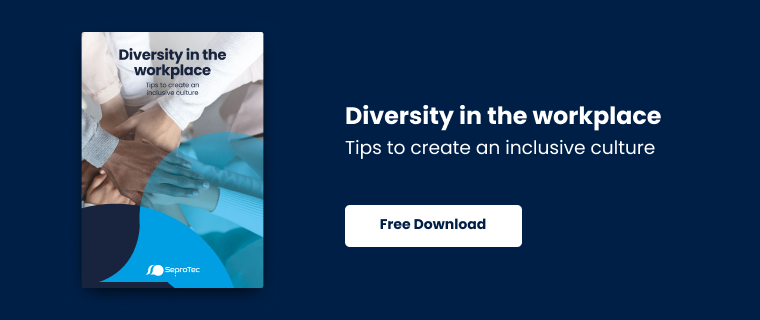
While cultural diversity in companies is enriching and expedites innovation, creativity and productivity, examples of cultural problems that might come up in the workplace should be averted to avoid conflict that may also end up damaging the very viability of the organization.
Thanks to the rapid advance of technology, nowadays many projects are made up of people from different areas of the world, making the challenge not so much to do the work itself, but knowing how to adapt to the cultural context of the company or country in which the project is taking place.
Each culture has its own ways of approaching work objectives, processes, decision-making and teamwork. Anticipating those unique ways is what will keep them from becoming cultural problems that may be hard to resolve.
Examples of cultural problems and differences
Cultural differences stem from a variety of sources:
Language
Global companies tend to communicate in English. The meetings, the texts they write, the relationships between them in that language — in which not all employees are equally competent — can give rise to problems of interpretation and meaning.
Idiomatic phrases and expressions can cause confusion. Regional accents and dialects further complicate communication and can lead to misunderstandings.
Religion
Religion is intimately related to people’s own identity and influences the way they perceive what’s happening, how they interpret situations and how they react and act.
Ethnicity
Members of a particular ethnic group made up of those who often belong to the same social group and share common characteristics, such as communication styles. In the same situation, some people may behave in a serious and distant manner, while others may be more empathetic and warmer.
Sexual orientation
Many countries already have specific legislation against discrimination on the basis of sexual orientation, but hostile attitudes towards some people, such as the LGBTQ community, continue to exist. It is another clear example of a cultural problem.
Education
Education also affects the way in which people adapt to change, the way they act when faced with unforeseen events, how they relate to others and how they manage their emotions, all of which can cause conflicts due to different levels of education and experience in overcoming challenges.
Generation
Age clearly also makes a cultural difference. Depending on their generation, people may have different views, expectations and levels of commitment in the development of the projects they participate in.
Most millennials are passionate about challenges and new opportunities for growth and expansion. Older generations on the other hand tend to be more predictable, stable and loyal to the company.

The 3 most common examples of cultural problems
- In the US, for example, the economy is fast-moving. People and companies focus on short-term goals and results, competitiveness and talent retention. As a result, companies are extremely international and offer great opportunities for workers.
- In Germany, on the other hand, they are focused on process, systematization and standardization. They are more rigid, more focused on quality and product than on the customer.
- In China, they value long-term partnerships more highly and their language, habits and ways of doing things are a challenge for the Western world.
How can we prevent cultural problems?
- Offering language training to enable all employees to correctly do their job and interact with others.
- Raising awareness about world religions, to promote understanding and a sense of togetherness, preventing friction between people who do not understand each other’s spiritual beliefs or customs.
- Ensuring effective and appreciative communication in which everyone feels heard, respected and taken into account.
- Making the various communication channels and information media more flexible so that they are equally accessible to all employees.
- Avoiding jargon and acronyms that do not have equivalent translations in all languages or do not share meanings or nuances in each culture.
- Giving priority to visual elements and instructions in more than one language to facilitate adaptation to changes in the organization as well as onboarding.
- Designing tools for early reporting and detection of any incident, before it becomes a cultural problem that is hard to address.
- Establishing policies against bullying and discrimination, as well as a zero tolerance policy regarding sexual harassment, applied to all levels in the organization.
- Raising awareness about subtle and unintentional microaggressions, expressions, phrases, comments or behaviors related to gender, religion, race or sexual orientation, which may turn into cultural problems and misunderstandings.
- Implementing plans and processes to help identify microaggressions and how to address them effectively.
- Developing cultural competency. The skill based on learning how to interact and communicate effectively with people from different cultures.
These are just a few examples of cultural issues that, if they are taken into account and if a prevention plan is in place in the organization, will become opportunities for ongoing improvement and growth both for people and for the company itself by developing more welcoming, inclusive and diverse workplaces.
1 comment
21 de June de 2024 09:14
Thank you for this insightful article on cultural problems in companies. It effectively highlights the various sources of cultural differences and provides practical solutions for preventing conflicts. The examples and preventive measures outlined are particularly useful for fostering a more inclusive and harmonious workplace. Great job in addressing such a complex issue with clarity and depth!





Leave a comment